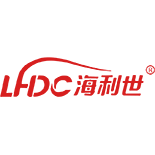car throttle cable
Understanding Car Throttle Cables Function, Importance, and Maintenance
Throttle cables play a vital role in the operation and performance of vehicles, particularly in traditional internal combustion engine cars. Understanding how these components function, their importance, and how to maintain them can not only enhance your driving experience but also prolong the lifespan of your vehicle.
What is a Throttle Cable?
A throttle cable is a mechanical linkage that connects the accelerator pedal to the throttle body of an engine. When a driver presses the accelerator pedal, the throttle cable pulls the throttle plate open, allowing more air and fuel into the engine and thereby increasing the vehicle's power output. This simple yet effective system has been the standard in many vehicles, particularly older cars, where electronic throttle control systems have not yet taken over.
Importance of Throttle Cables
The importance of a functioning throttle cable cannot be overstated. It directly influences the vehicle's responsiveness and acceleration. A properly functioning throttle cable ensures that when a driver presses the accelerator, the engine responds immediately, allowing for smooth acceleration and deceleration. Conversely, a malfunctioning throttle cable can lead to a variety of issues, including
- Delayed Response A frayed or sticking throttle cable may result in a delayed response between pressing the pedal and the engine’s power output. - Stalling In severe cases, if the throttle cable is completely jammed, the engine may stall, causing a dangerous situation, especially in traffic. - Increased Wear and Tear A failing throttle cable can put additional stress on the engine components, leading to premature wear or damage.
Signs of Throttle Cable Issues
car throttle cable

Being aware of the signs that indicate a throttle cable issue can help in preventive maintenance. Common symptoms include
1. Sticky Accelerator Pedal If the accelerator pedal feels resistance when pressed or returns slowly after being released, it may indicate that the throttle cable is binding or frayed. 2. Erratic Engine Performance A vehicle that experiences fluctuating engine speeds or acceleration might have a problem with its throttle cable. 3. Visible Wear Inspecting the cable for any signs of fraying, corrosion, or damage can help catch issues before they become serious.
Maintenance Tips
Maintaining your throttle cable can significantly enhance your vehicle's performance and ensure your safety on the road. Here are some maintenance tips
- Regular Inspections Periodically check the throttle cable for signs of wear or damage. Look for fraying, kinks, or corrosion. - Cleaning Dirt and grime can build up around the cable housing, causing it to stick. Regularly clean the area to ensure smooth operation. - Lubrication Applying a suitable lubricant can help reduce friction within the cable system. Make sure to use the appropriate lubricant for your vehicle's specifications. - Replacement If you're noticing consistent problems with the throttle cable, it may be time to consider a replacement. Consult your vehicle's manual or a professional mechanic to ensure proper installation.
Conclusion
The throttle cable is a crucial component of any vehicle's mechanics. By ensuring it functions correctly, drivers can enjoy a smooth and responsive driving experience. Regular checks and maintenance can prevent failures and prolong the life of the vehicle. For car enthusiasts and everyday drivers alike, understanding and caring for the throttle cable enhances overall vehicle performance and safety. Whether it be a routine inspection or immediate repairs, taking the time to focus on this seemingly minor component can lead to substantial benefits in vehicle reliability and efficiency.
-
Workings of Clutch Pipe and Hose SystemsNewsJun.04,2025
-
The Inner Workings of Hand Brake Cable SystemsNewsJun.04,2025
-
The Secrets of Throttle and Accelerator CablesNewsJun.04,2025
-
The Hidden Lifeline of Your Transmission Gear Shift CablesNewsJun.04,2025
-
Demystifying Gear Cables and Shift LinkagesNewsJun.04,2025
-
Decoding Clutch Line Systems A Comprehensive GuideNewsJun.04,2025
